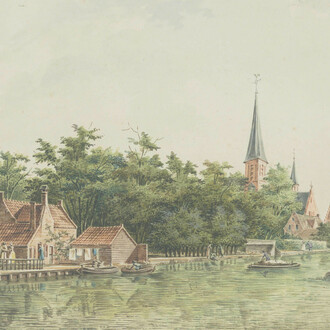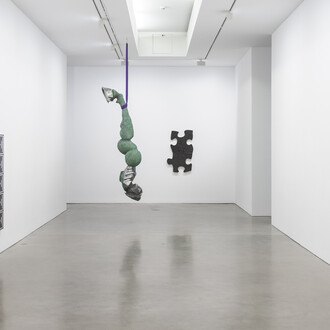Tremmel's landscapes first appear in a more historical style of painting that symbolises place and longing for perfection in a large-scale format. Firstly, Tremmel presents the complex romantic order of the world as universal poetry, which is then painstakingly and rapidly removed. In the sawing out, over-shading, over-painting and elimination of pictorial parts, he erases the pathetic panorama and introduces an image of imperfection. The landscapes are only partly indicated by the punctual emergence of the light and through the energetic, expressive and radiant colors. The deliberate elimination of the central perspective extends itself from the history of art to the world. Overcoming the destruction of holism reflects the old and the new world and makes the old masters come to new terms and values.
In addition to large-scale works, smaller format paintings are also created on a variation of supports such as metal and plastic, which are compact, irregular and abstract structures with a high-gloss surface. They are left as ‘deus ex machina’ in the emergence of the extreme acting forces: the heat, their materiality, and the unpredictable action of their energies.
Tremmel does not only claim the pendulum movement of creation and destruction: the counter-movements here are bound together through the interaction between concrete pre-existing nature and abstraction. The process of transgression and re-creation is made possible in the works through that standstill moment just before the break. Titles such as »Erscheinung« (»appearance«), »Ausbruch« (»eruption«), »Erlösung« (»redemption«) and »Entladung« (»discharge«) testify to the moment of exaggeration. Clemens Tremmel has created a striking world for an image standstill.
















